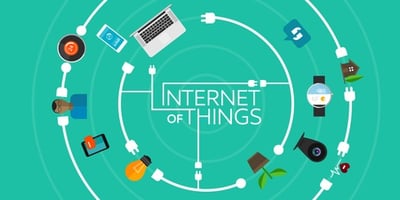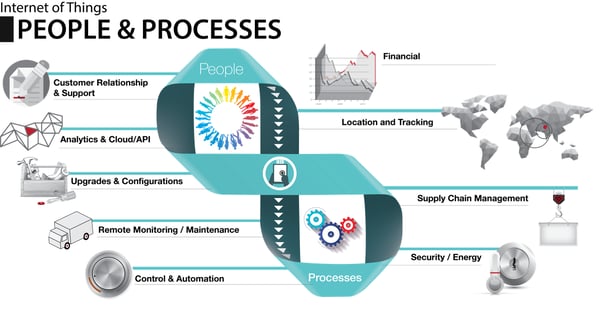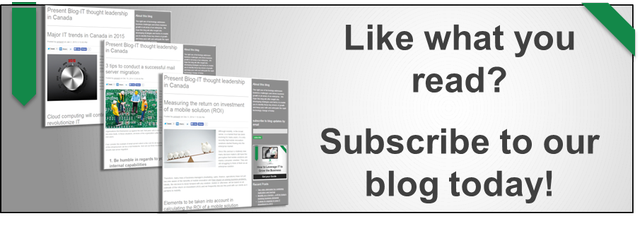Present Blog – IT Thought Leadership
Blog Present-IT thought leadership
Blog Present-IT thought leadership
IT thought leadership blog for CIOs and CTOs in Canada seeking resources to drive IT as a business contributor: hybrid cloud, infrastructure, managed services and security and IT recruitment.
 The Internet of Things or IoT, cannot be simply summed up as a technological breakthrough. As advances in mobility are already changing our lives, the Internet of Things will bring this to a whole new level.
The Internet of Things or IoT, cannot be simply summed up as a technological breakthrough. As advances in mobility are already changing our lives, the Internet of Things will bring this to a whole new level.
The definitions of the Internet of Things are multiple and I usually refer to the one from UTI: A global infrastructure for the Information Society, enabling advanced services by interconnecting (physical and virtual) things based on, existing and evolving, interoperable information and communication technologies. Basically, it is the concept of connecting any device to the Internet and to each other.
The story and the future of the Internet of Things is being written as we speak. However, the factors that are influencing the development of this new stage of the Internet are already well known:
-
• The proliferation of inexpensive sensors and chips that allow for the communication of information
• The advancement of wireless networks and cloud computing infrastructure
• The expansion of application development
• The progression of a connected culture
In 2016, companies will need to integrate the Internet of Things not only from an operational standpoint, but at a strategic level. In fact, the question is not whether to engage in mobility and the IoT, but how.
The objective of the Internet of Things
The core objective of an IoT approach must always be to improve a current way of doing things. This applies to either the customer experience, to everyday processes, both in the workplace and outside of it.
Today, 75% of companies who are exploring the Internet of Things tend to do it to improve their internal operations and services.
How does IoT impact our lives?
When one thinks of the Internet of Things, we often think of applications for the home, for example wearable devices like a Fitbit, washing machines or lamps. On a larger scale, many cities are moving towards the concept of a "smarter city". This is inevitably leading to the expansion of Wi-Fi networks on a large scale as seen, for example, by the city of Quebec, who wants a completely connected city by 2018.
In this recent article, Peter Buonora cites some examples of businesses that are relying on the Internet of Things to create a unique and memorable customer experience. This is the case at Starbucks, where the company is seeking to anticipate the needs of its customers by preparing their favorite drink as soon as a sensor detects their presence in the parking lot.
We must go beyond the belief that seems to have developed that the Internet of Things is a strategy limited to multinationals. Whether in logistics, agriculture, entertainment, health, culture and other sectors; small and large companies have gains to realise through this technological advancement.
For example, in Quebec, various agricultural producers are already enjoying the benefits of IoT for irrigation. With probes connected to the earth, farmers can improve their irrigation by adapting the actual quantities of water needed to obtain the best yield possible.
3 essential components for IoT

1. Sensors
These miniature devices, such as Beacons for example, are already prevalent in our daily lives, allowing the capture of information. We find these sensors in devices and objects we use every day without even knowing. According to Juniper Research, the number of connected devices will reach 38.5 billion by 2020, an increase of 13.4 billion compared to 2015, which is a 285% growth!
Just as humans have, with these sensors, there will exist a world with a digital central nervous system.
2. Connectivity
Connectivity is the pathway between sensors and the third element of the IoT, which is people and processes.
Without the infrastructure to collect data and send it for processing, it would not be possible to unlock the value of the data. Therefore, systems must be integrated effectively within enterprises.
3. Individuals and processes
Individuals takes action, which allows the sensor to have information to be recorded; they are also found at the other end of the chain developing applications to interpret the data. And all the processes put in place thanks to the data are used to generate value and achieve a defined objective.
Remember
As time goes on and the Internet of Things continues to grow, we will continue to understand its opportunities and impacts. But one thing is for sure, IoT is a very important link in the digital transformation which companies must attach great importance, as it will serve as a game-changing lever of growth.
About Blog
The right use of technology addresses business challenges and drives business growth in all areas of an enterprise. We hope this blog will offer insight into developing strategies and tactics to enable you to identify those key drivers of growth and keep pace with and anticipate the rapid technology change of today.
Posts by Topic
- IT infrastructure (116)
- IT security (92)
- IT Innovation (59)
- Trends (51)
- Cloud (47)
- Managed services (46)
- Mobility (38)
- Digital transformation (29)
- CIO/IT leaders (28)
- Events (28)
- News (23)
- Microsoft 365 (17)
- Security (17)
- IBM (16)
- Disaster recovery (DR) (14)
- High availability (12)
- Recruitment (12)
- Storage (12)
- Big Data (11)
- Collaboration (11)
- AI (9)
- Case study (9)
- Office 365 (9)
- BYOD (8)
- Customer Experience (8)
- Hybrid Cloud (7)
- Current events (6)
- SAP Hana (5)
- Business intelligence (BI) (4)
- Converged infrastructure (4)
- Convergence / Hyper-convergence (4)
- Virtualization (4)
- Copilot (3)
- Future of retail (2)
- Retail (2)
- trend (2)
- Backups (1)
- Beacon (1)
- Blog Migrations (1)
- Contests (1)
- Infrastructure TI (1)
- Innovation TI (1)
- IoT (1)
- MDM (1)
- Stockage (1)
- Virtualisation (1)
- blockchain (1)
- cio (1)
- replication (1)
- Étude de cas (1)

